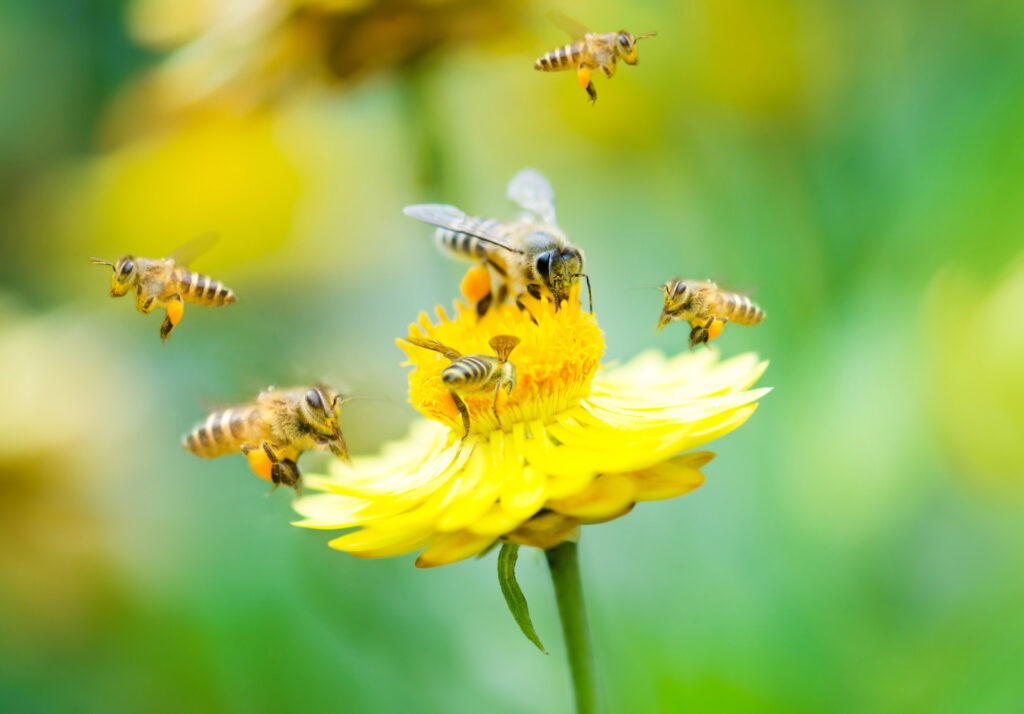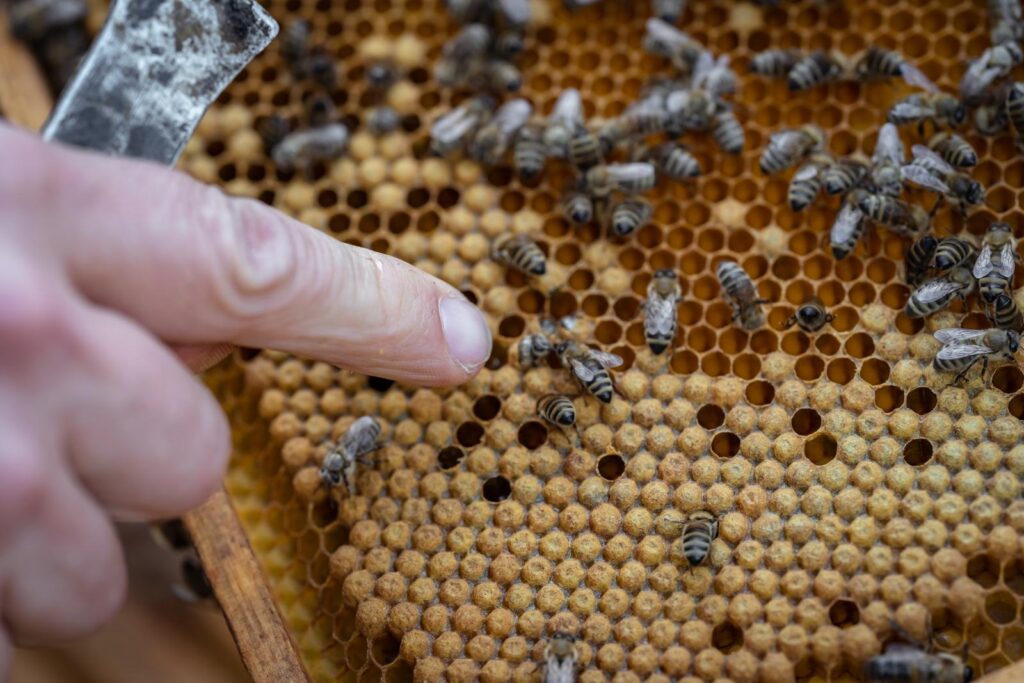Have you ever wondered how much honeybee produces? If you answered yes, then this blog post about bees and honey production is for you!
Bees are amazing creatures. They really are. They pollinate our plants, fruits, and vegetables which are crucial for us to survive. And besides pollination, they also produce honey as well. Bees make a metric ton of honey every single year!
But how much is that? If you’re an avid beekeeper and have been keeping bees for a while, you may already know the answer to this question. On the other hand, if you’ve just acquired your first hive or are just starting out keeping bees, you might be wondering how much honeybee makes in their lifetime. This is a great question and one that is not easily answered.
Most of us really don’t know how much honeybee makes, even considering the size of the hive. But one thing is for sure: they produce a lot of it. If you’re curious about how much honey does a bee make?
Are there any sustainable solutions to increase the honey yield from a given hive? I’ve compiled some great information for both amateur and professional beekeepers so you can answer these questions, read further to find out!
Before we get into the specifics, you should understand how bees make honey and how their colonies work.
How do bees make honey?
There are many types of bees, but we will be focusing on the honeybee. Our friend the honeybee is responsible for making honey! But how do they do that?
Nectar collection
First, honey bees collect nectar from flowers using their long tongues (called a proboscis) to suck up the sweet liquid from blossoms. The nectar is then stored in a special stomach called a honey stomach which allows the bees to carry more nectar back to the hive.
Regurgitation
After collection bees bring this liquid to the hive where the bee passes the nectar to another worker bee. The receiving bee takes it into her mouth, sucks out the water, and passes it to another bee. This process continues until all of the water has been removed from the nectar by this method of regurgitation.
Then, if there is pollen in the mix (which is always present), that pollen will be transferred from one bee to another by a process called entomophagy or “insect eating”.
Enzymes addition
The worker bee adds enzymes that break down sucrose into its two simple sugars, glucose and fructose. This is what makes honey sweet!
The worker bee also has enzymes to digest pollen, which helps them make protein for themselves and the larvae.
Evaporation
Next, the workers fan the liquid with their wings to evaporate some of the water, increasing the sugar concentration and preventing fermentation.
Storing
After harvesting, honey is stored in honeycombs made of wax secreted by worker bees. The process of making these honeycombs begins during the spring when young worker bees are born.
The worker bees use their bodies to secrete wax from glands on their abdomens; this wax is combined with saliva and used to build honeycomb cells. The hexagonal shape of these cells helps prevent gaps that would allow for moisture to leak into the hive and contaminate the harvested honey.
How does their colony work?
A bee hive contains three types of bees. There are the queen bees, workers, and drones.
Queen
The first and most important member of a bee colony is the Queen. She is the only female bee in the hive who can lay eggs. She is the largest in size and has the most developed ovaries.
The queen lives for several years, during which time she lays around 2000 eggs per day. Her sole purpose in life is to reproduce and lay as many eggs as she can.
Workers
A worker bee’s life is much less glamorous than that of the queen bee. Worker bees are sterile females who do all of the work in a colony.
They feed larvae, clean and guard the hive, collect pollen and nectar from flowers and make honey by regurgitating it from their stomachs into cells in the hive. A worker bee will live for about six weeks before dying from exhaustion or disease.
Drones
Drones make up about 10% of a colony’s population, but have no stinger so they cannot sting people or other animals – fortunately! Drones mate with queens outside of their hives and die soon afterward because they don’t have enough food inside their bodies to keep them warm during winter months when temperatures drop below freezing point.
How much honey does a bee make?
The amount of honey the bee produces is determined by the species of bee, location, and season. In general, though, here’s how much honey bees make:
The average worker bee makes about 1/12 teaspoon of honey in her lifetime, which is why it takes so many bees to make a single jar of honey. That may appear to be a small sum, but it starts to add up. Think about it: if you have one million bees in your hive, that’s over 100 gallons of honey. And if you have just 10 hives, well, that’s still over 250 gallons of honey!
A beekeeper can harvest between 50 and 100 pounds of honey from a hive during a good season. But this isn’t enough to make much money off of. Most commercial beekeepers sell their bees to farmers who use them to pollinate crops like almonds or apples.
Different honeybee species and how much money they produce
There are numerous honey-producing bee species all over the world, each producing a different amount of honey. Some common honeybees are listed below.
Apis cerana
Apis cerana, also known as the Indian honey bee, is a native species of honey bee that can be found in India. The Apis cerana is believed to be the result of a cross between two subspecies of A. mellifera: A. m. intermissa and A. m. carnica (Indian bees).
The Apis cerana is distinguished from other species of honeybees by their smaller size and darker coloring (their thorax tends to be more yellow/orange than white). These bees produce 7 to 10kg of honey per colony per year, which is less than other pee species such as European honey bees.
Apis dorsata
A. dorsata (the Giant Honey Bee) is native to India and Indonesia but was introduced into other regions of the world, including Japan, Korea, and China. This species is a social bee that lives in colonies consisting of several hundred workers and one queen. This species of honey bee produces 36kg per year per honeycomb.
Apis Florea
Apis Florea is another common species of the honey bee. They are good pollinators, but they don’t have a stinger (which makes them stingless). Apis florea also called European honey bee produces between 23kg to 38kg of honey per colony in a year.
Apis laboriosa
Apis laboriosa is an Asian honey bee. It’s a stingless bee, making it ideal for those who are allergic to bees or afraid of being stung. Apis laboriosa also produces honey and wax, but they don’t live in hives like other types of bees do; you’ll find them living in hollows on trees or cavities on walls. Because they aren’t aggressive towards humans, you can get close enough to watch them at work!
Besides that, Apis laboriosa bees produce between 25 and 55kg of honey per year, depending on the environment in which they live.
Apis mellifera
Apis mellifera is the most common honey bee species in the world, and it is also the only species of Apis that can be found in North America. This social insect lives in colonies consisting of a mother queen, drone bees, and worker bees. The queen lays eggs that hatch into larvae that mature into adult workers who are responsible for collecting pollen and nectar from flowers while they build their hive.
Worker bees live for about six weeks before dying or being replaced by new ones. This popular honey bee species makes 36kg of honey per honeycomb in a year.
Trigona fulviventris
Trigona fulviventris is a species of stingless bee found in South and Central America. It is a very aggressive bee, so keep your distance. Though not as productive as Apis mellifera, T. fulviventris is still a good honey producer.
These bees make only 2kg of honey per year. This species has been introduced to the United States and has established itself there, much like A. mellifera did centuries ago (though thankfully without the same level of destruction).
Honey production in different seasons
Honey production is affected by the season, and in some cases, the weather. The effects of honey production are more pronounced in a few situations.
Honey Production during Winter
In winter, bees do not fly as much, and they produce less honey than they do during other seasons. This is due to the fact that the temperature is too low to support flight activity. Furthermore, there are fewer flowers available for pollination at this time of year.
Honey Production during Summer
In summer, bees tend to build up more honey stores than they do in winter. This is because more flowers are available for pollination, and there is less competition for them from other insects or animals that might eat them. In addition, the warmer weather allows for increased flight activity among bees which makes it easier for them to find new food sources and return home with pollen or nectar that can be used as a food source by their hive mates.
How to increase honey yield from a given hive?
The most important thing you can do to increase your honey yield is to have healthy bees and strong hives, which will be able to gather more nectar from the flowers and store it in a comb that is free of disease. The methods listed below will help you increase the yield of your beehive.
Comb management
Comb management is an important part of increasing honey yield. You need to keep the comb relatively empty, while still leaving enough room for brood rearing. This can be achieved by removing any unused combs (and replacing them with new ones) as well as by destroying old combs if they contain no pollen or brood. You can also use some of the old combs for extracting honey instead of making new ones every year.
Pest control
One of the biggest problems beekeepers face when trying to increase their honey yield is pests like wax moths and varroa mites which can take over their hives and destroy their bee population by killing off young bees and spreading disease through the hive. Therefore, use insulated beehives to keep the pest away.
Beekeeping equipment maintenance
Make sure all of your beekeeping equipment is clean and in good condition. This includes the frames, brood boxes, and supers. Brood boxes should be painted with white paint or varnished to help keep wax moths away.
Final words
In the end, we can be fairly sure that the question of how much honey bees produce is not one with a simple answer. There are a great many factors that affect the final results, from how efficient the bees’ hive is to how much time the bees have to work.
But hopefully, we’ve shed some light on this often-overlooked but fascinating aspect of bee life. And if you’re interested in learning more about these remarkable insects, check out our other bee blogs before you move on!


